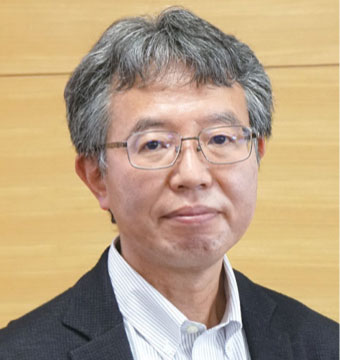Distinguished Achievement and Contributions Award

Dr. Masaya Notomi received his M.E. degree in applied physics from the University of Tokyo and joined NTT Optoelectronics Laboratories in 1988. He was a visiting researcher at Linköping University in Sweden from 1996 to 1997. He received his Ph. D. in engineering from the University of Tokyo in 1997. Since 1999, he has worked at NTT Basic Research Laboratories, where he served as group leader of the Photonic Nanostructure Research Group, was given the title of senior distinguished researcher, and worked as director of the Nanophotonics Center. His educational activities started in 2001 when he was invited to be a guest associate professor at the Tokyo Institute of Technology. He became a guest professor and a professor at the same university in 2010 and 2017, respectively, dedicating time and energy on the education of students.
Dr. Notomi has long been engaged in research into integrated nanophotonics that exploits nanofabrication technology, shedding light on new optical phenomena in nanostructures, and applying the result to dramatically reduce the size and energy consumption of optical communication devices.
He immersed himself in the study of nanoscale artificial periodic structures, called “photonic crystals” from an early stage in their development and has produced numerous important results. At the time this research began, he proposed new optical phenomena, such as negative refraction and slow light, and was the first to verify these phenomena. These results were referenced in many papers, and the phenomena he verified are about to be applied to lidars. In 2005, he was also the first to develop an optical switch that uses a photonic crystal resonator. In 2010, he succeeded in reducing the operating energy of an optical switch by two orders of magnitude compared to that of conventional optical switches. Conventional optical elements involved a trade-off between increasing speed and saving energy. Dr. Notomi successfully eliminated this trade-off by using light confinement in photonic crystals. This had a substantial impact on the academic community working in the same area. This principle was later applied to other optical information processing elements to decrease their size and energy consumption. Representative examples of these elements are optical switches (2010 and 2020), optical memories (2012 and 2015), photodetectors (2016), optical modulators (2019), and optical transistors (2019). He demonstrated that the energy consumed by these elements is smaller by one to six orders of magnitude than that consumed by corresponding conventional elements. The degree of these energy reductions remains a world record. He was also the first to develop technology for integrating nano-optical elements and fabricated a 105-bit integrated optical RAM in 2014. This was important for implementing ultrashort-distance optical interconnects, as reducing power consumption was the key to success in this endeavor. It also demonstrated the feasibility of integrating a large number of optical elements in a processor chip. This technology is expected to open the way to chip-scale optical communication technology in the future.
For the achievements mentioned above, Dr. Notomi received the Japan Society for the Promotion of Science Award, Japan Academy Medal, the Commendation for Science and Technology by the Minister of Education, Culture, Sports, Science and Technology, and was elected as an IEEE fellow. He is also recognized as an exemplary researcher in his field of expertise, having been invited as an invited or keynote speaker to more than 160 international conferences, thereby enhancing Japan’s international standing in science and technology. In addition, as the director of NTT Nanophotonics Center since 2013, he has been leading integrated nanophotonics research, ranging from basic to applied research, and continues to produce world-leading research results. Furthermore, he is contributing to the academic community by being involved in the organization and management of many international conferences related to optical communication, such as the Opto-Electronics Communication Conference (OECC), and by serving as the director of editorial and publishing affairs for special issues of IEICE Transactions and other scientific journals.
As mentioned above, Dr. Notomi’s contributions to the information communication field have been outstanding, and we are convinced that he is eminently qualified to receive the Distinguished Achievement and Contributions Award.